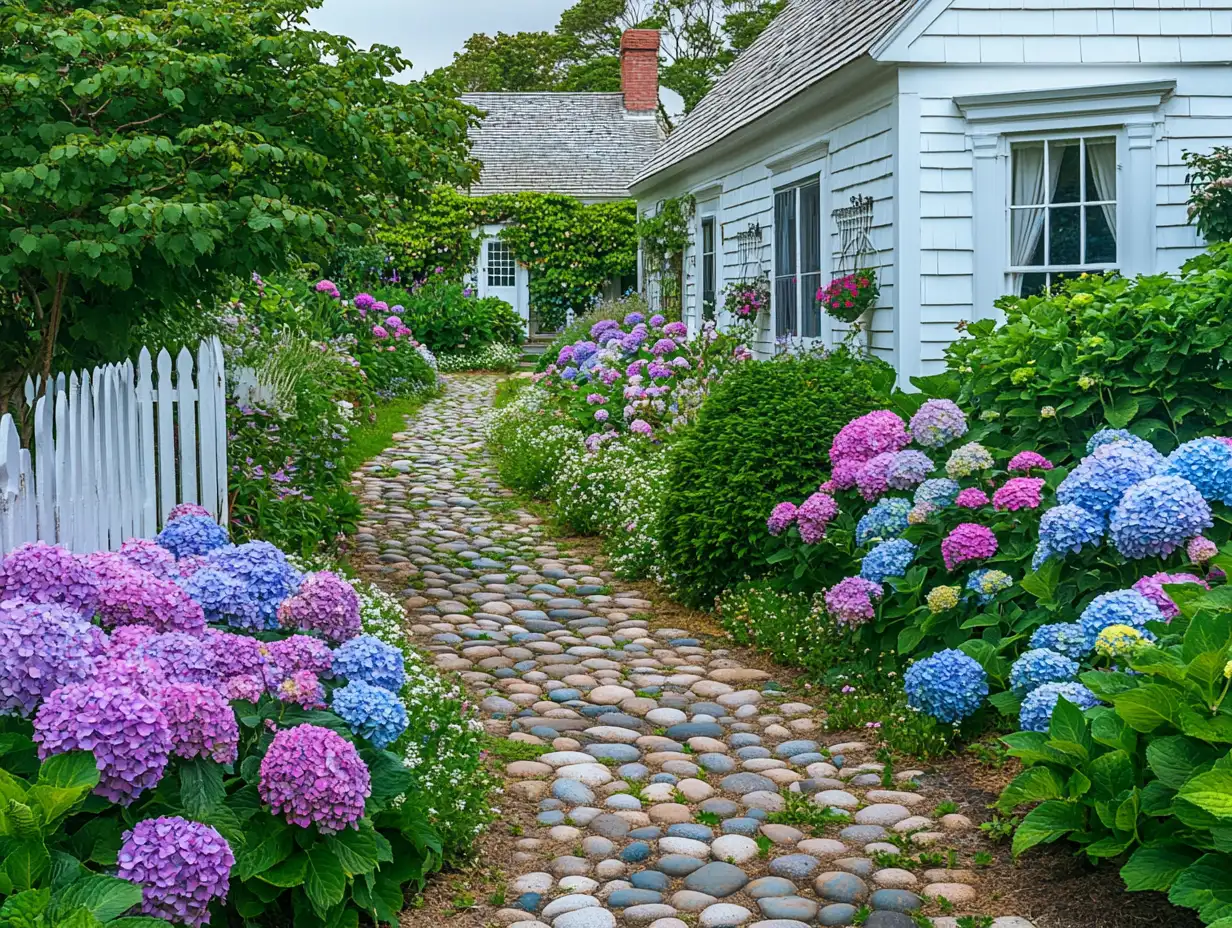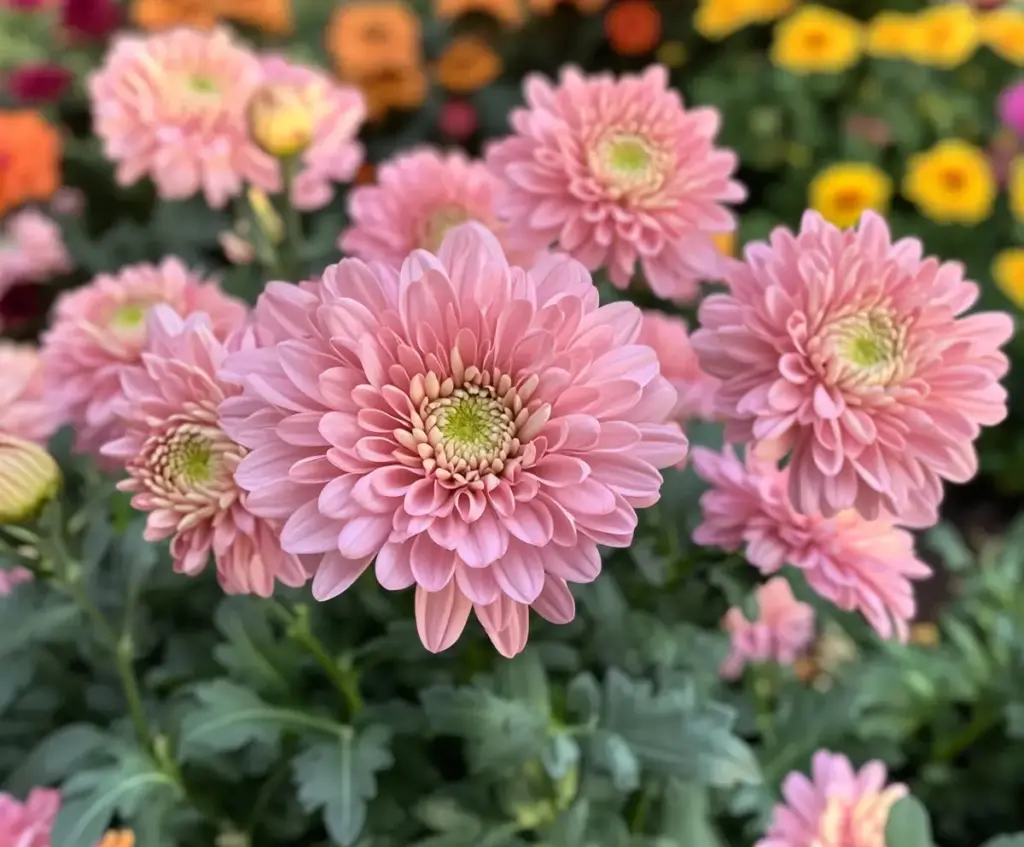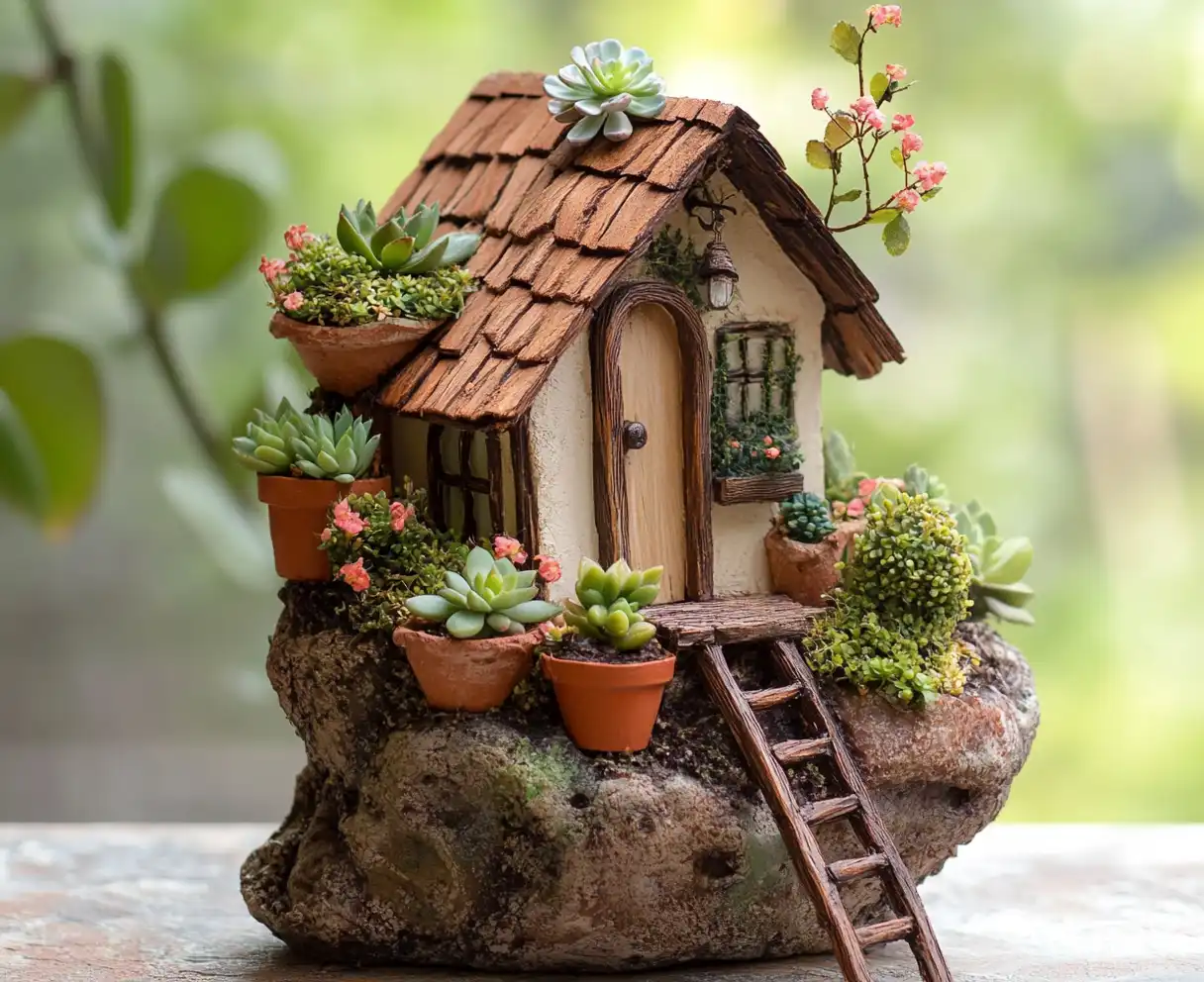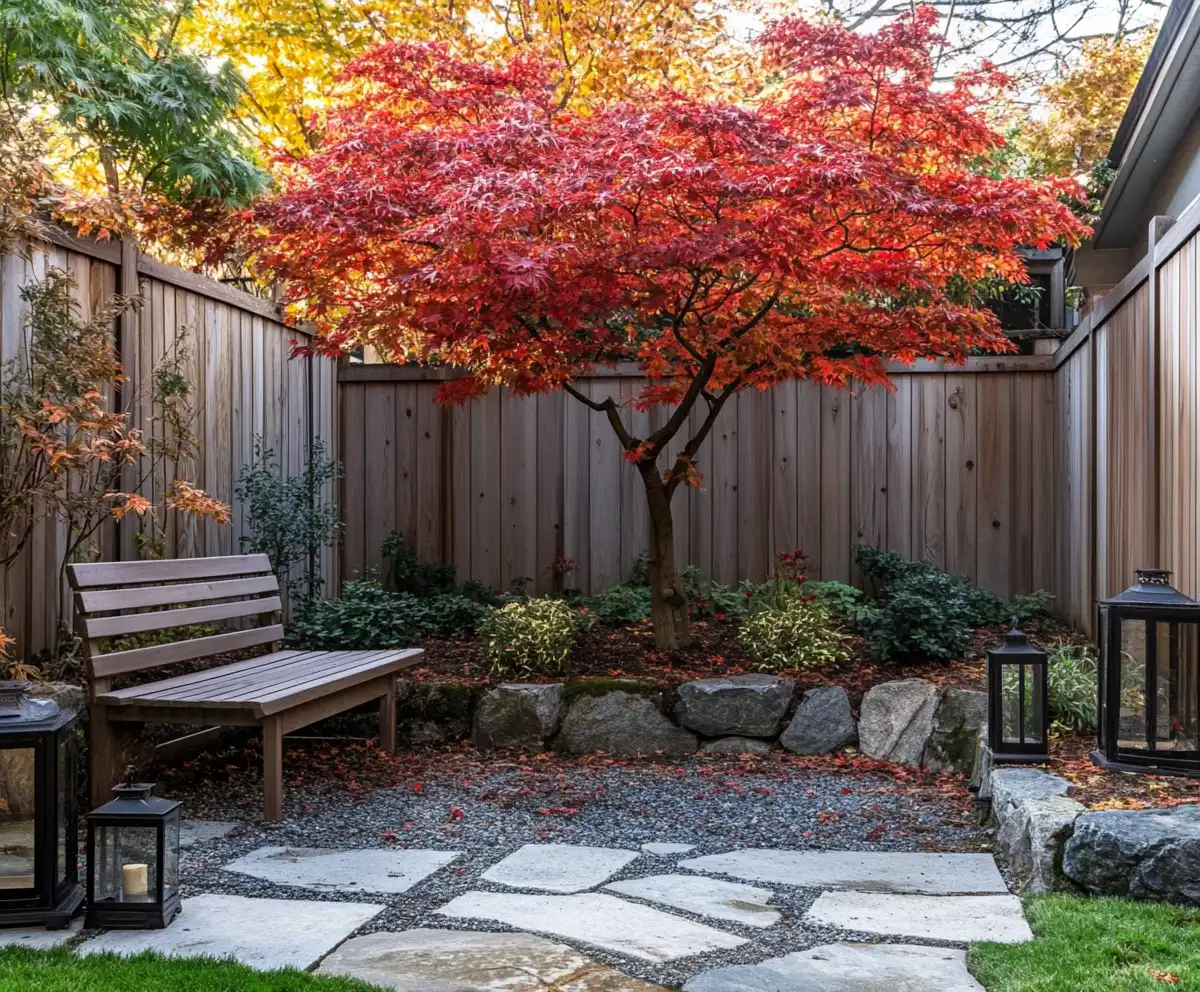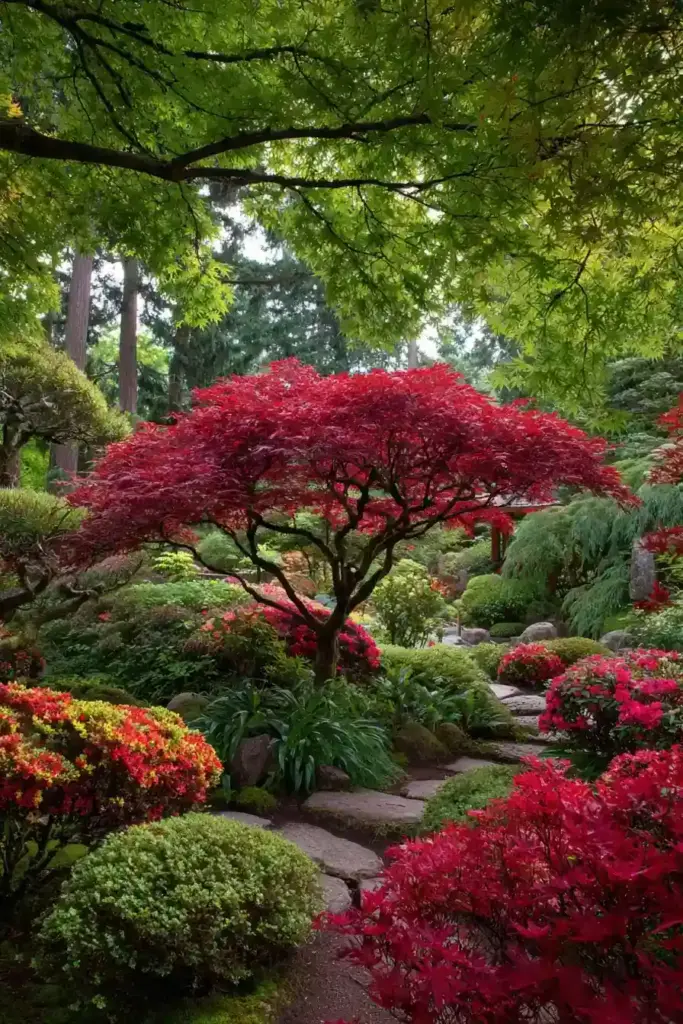Japanese maple garden designs offer a timeless blend of beauty, balance, and tranquility. These elegant trees—with their striking foliage and graceful form—bring structure, calm, and seasonal interest to any outdoor space, from spacious backyards to small courtyards.
Rooted in symbolism and simplicity, Japanese maples are perfect for creating serene retreats that reflect harmony with nature. In this guide, explore over 18 inspiring garden ideas that pair traditional elements with modern design to craft your own peaceful oasis.
Table of Contents
🍁 1. Create a Multi-Layered Look
In a thoughtfully designed Japanese maple garden, layering is key to achieving depth and visual intrigue. By combining different varieties of maples—each with unique heights, foliage textures, and seasonal colors—you can create a lush, multi-dimensional space that evolves throughout the year.
Tips to Achieve a Layered Look:
- Start with a focal tree like the tall ‘Bloodgood’ maple for structure.
- Add mid-sized varieties such as ‘Osakazuki’ or ‘Shishigashira’ for contrast in leaf shape and color.
- Finish with dwarf types or shrubs like ‘Kiyohime’ or ornamental grasses for a delicate ground-level detail.
This layered effect draws the eye across various heights and hues, offering a dynamic scene that never feels flat. It’s a technique rooted in traditional Japanese design garden ideas, where balance between simplicity and complexity creates harmony.
🏞 2. Design an Inviting Pathway
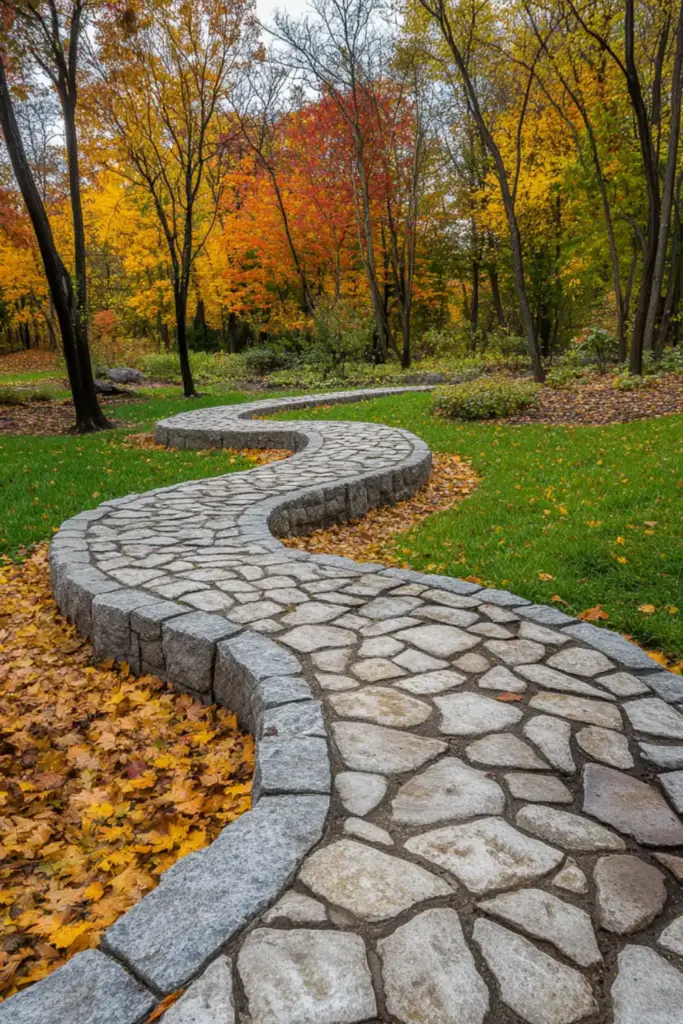
A signature element in any Japanese maple garden is a winding, thoughtful pathway that guides visitors through your landscape with intention and grace. Rather than a straight line, Japanese design embraces curves and rhythm — creating a journey, not just a route.
How to Design a Serene Garden Path:
- Use natural materials like flagstone, slate, or gravel for an organic feel.
- Frame the path with dwarf Japanese maples to create visual flow and soft movement.
- Incorporate gentle curves to evoke mystery and discovery.
- Add stepping stones spaced unevenly to slow walking pace, encouraging mindfulness.
This design principle not only elevates the beauty of your garden but also invites visitors to experience the calming presence of nature. When flanked by Japanese maples in varying sizes and colors, even the simplest path becomes a tranquil, artful feature.
🧘 3. Serene Meditation Space
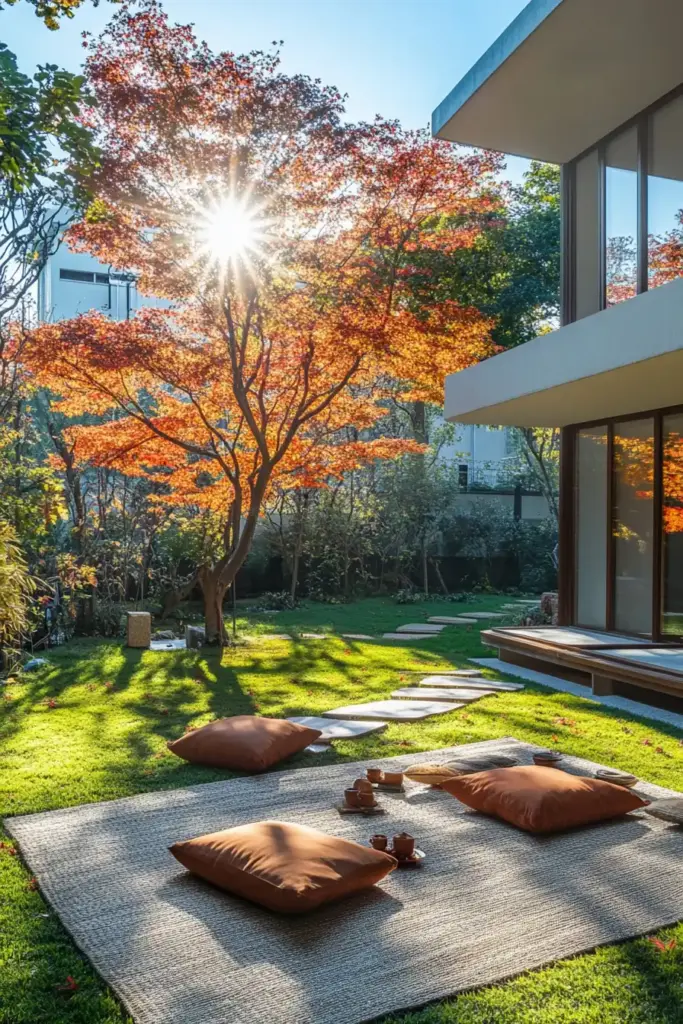
Incorporating a dedicated meditation area within your Japanese maple garden transforms it into a place of reflection, stillness, and emotional wellness. The graceful form and seasonal color shifts of Japanese maples naturally evoke calm, making them ideal companions for a Zen-inspired retreat.
Elements for a Peaceful Garden Sanctuary:
- Choose a quiet corner and surround it with maples like ‘Viridis’ or ‘Tamukeyama’ for soft, cascading foliage.
- Lay down a gravel or wooden deck to define the meditation zone.
- Include minimalist seating such as a stone bench or meditation cushion.
- Enhance ambiance with soft accents like bamboo screens, wind chimes, or a traditional garden lantern.
Framing your meditation space with maples encourages mindfulness through the senses—watching the leaves flutter, hearing the rustle in the breeze, and breathing in earthy aromas. It’s a holistic design that brings peace and purpose into your outdoor living.
💧 4. Add Tranquility with Water
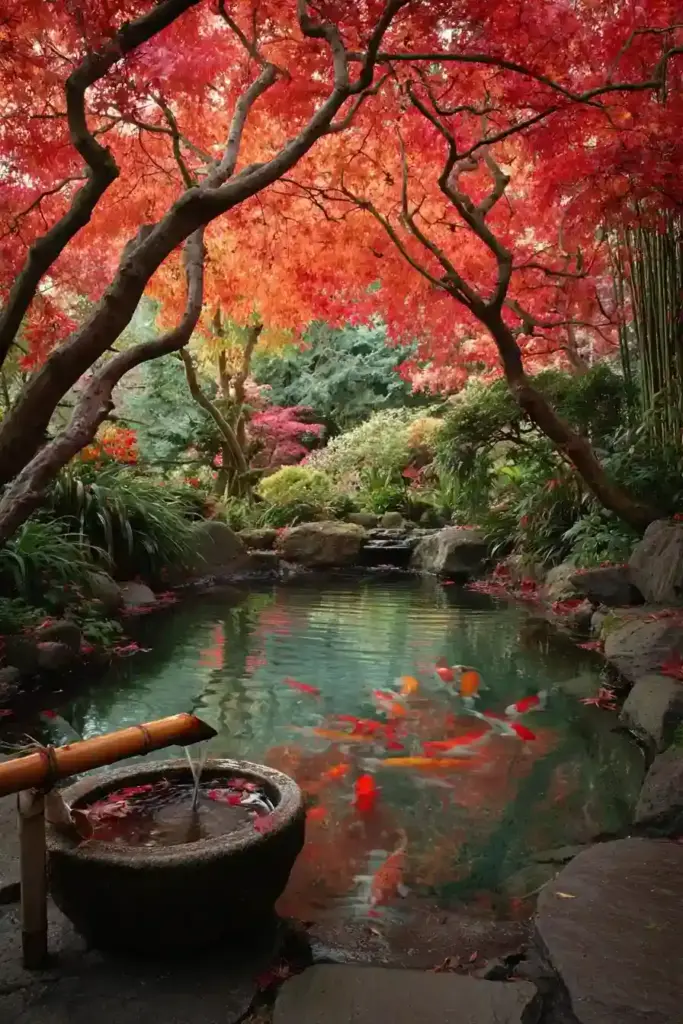
Few combinations are more calming than the sound of flowing water paired with the delicate form of a Japanese maple. Integrating a water feature into your Japanese maple garden amplifies the feeling of peace and encourages reflection — both literally and figuratively.
Tranquil Water Features to Consider:
- A koi pond or still pond reflects the brilliant foliage above, doubling the visual impact.
- Waterfalls or cascades add soothing sound and motion.
- A basin (tsukubai) paired with bamboo creates an authentic Japanese garden feel.
- Solar-powered fountains offer low-maintenance serenity with an eco-friendly touch.
Place Japanese maples near the edge of your water feature so their branches arch gracefully over the surface. In the fall, floating leaves add an ephemeral, poetic quality to the space — a gentle reminder of seasonal change and impermanence, core themes in traditional Japanese design garden ideas.
🔥 5. Fiery Focal Point
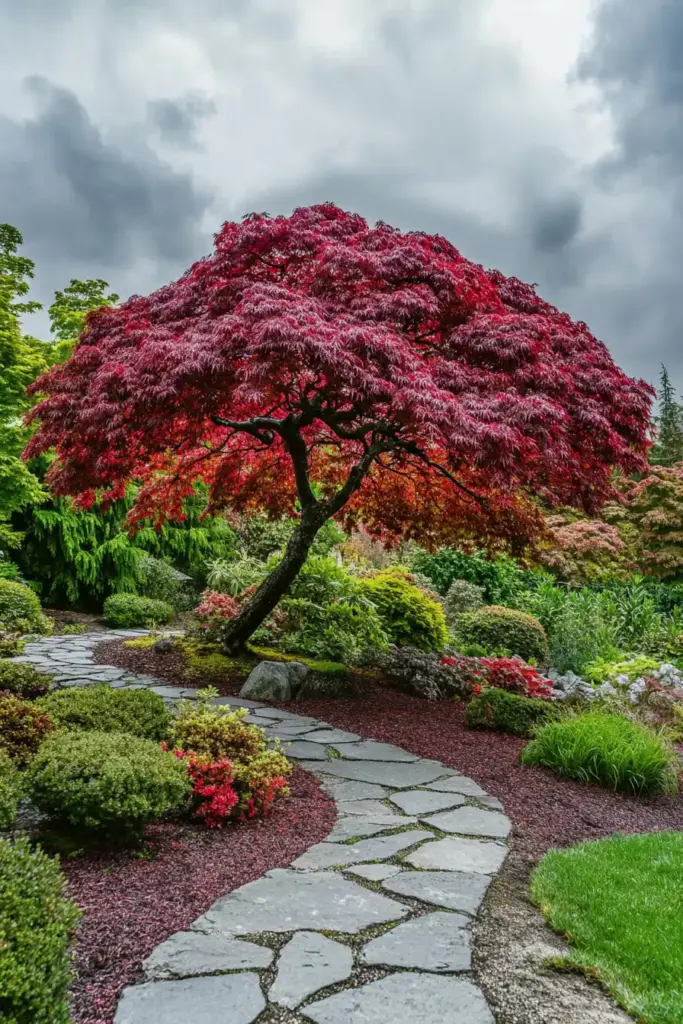
If you’re looking to make a bold statement in your Japanese maple garden, let the vibrant hues of Japanese maple foliage take center stage. Especially in autumn, varieties like ‘Emperor I’ or ‘Sango Kaku’ ignite with brilliant reds, oranges, and fiery golds — turning your garden into a living canvas.
How to Create a Show-Stopping Focal Point:
- Plant a single, bold maple in an open area where it can command attention.
- Frame it with evergreen shrubs or neutral hardscape elements to let the colors pop.
- Install lighting beneath the canopy to highlight structure and color during evening hours.
- Add seating nearby, such as a stone bench, to encourage quiet admiration.
Whether placed at the end of a path, in the center of a courtyard, or near your home’s entrance, a fiery focal point draws the eye and anchors your garden design. It’s a powerful way to express both seasonal beauty and intentional artistry in line with Japanese design garden ideas.
🏡 6. Create a Courtyard Oasis
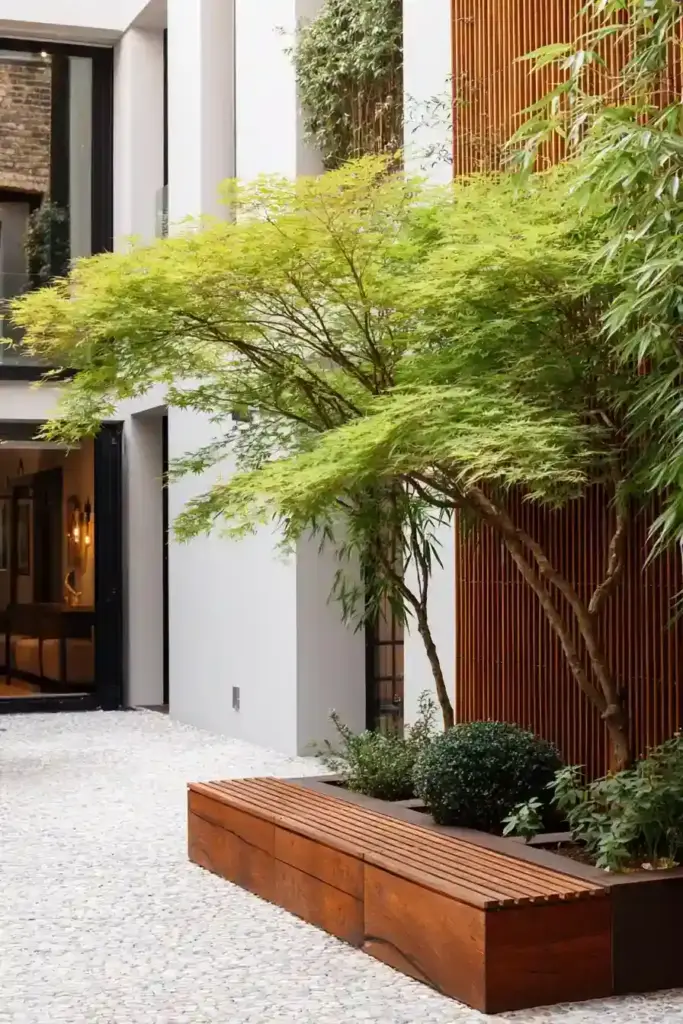
Even small spaces can bloom with purpose and peace when you bring Japanese maples into a courtyard setting. These trees excel in compact areas, thanks to their varied sizes and elegant structure. A Japanese maple garden doesn’t require acres—just intention and artistry.
Ideas for a Zen Courtyard Transformation:
- Select dwarf or semi-dwarf maple varieties like ‘Mikawa Yatsubusa’ or ‘Crimson Queen’ for tight spaces.
- Use containers or raised planters to add elevation and mobility.
- Place a wooden bench or bistro table to create a quiet sitting area for morning coffee or evening reflection.
- Complement with gravel, stone, or bamboo elements for a minimal yet sophisticated aesthetic.
This intimate garden style blends functionality and serenity, ideal for urban dwellers or those with limited outdoor space. A courtyard oasis brings the essence of Japanese design to life—simple, balanced, and beautifully calm.
📚 7. Craft an Intimate Garden Nook
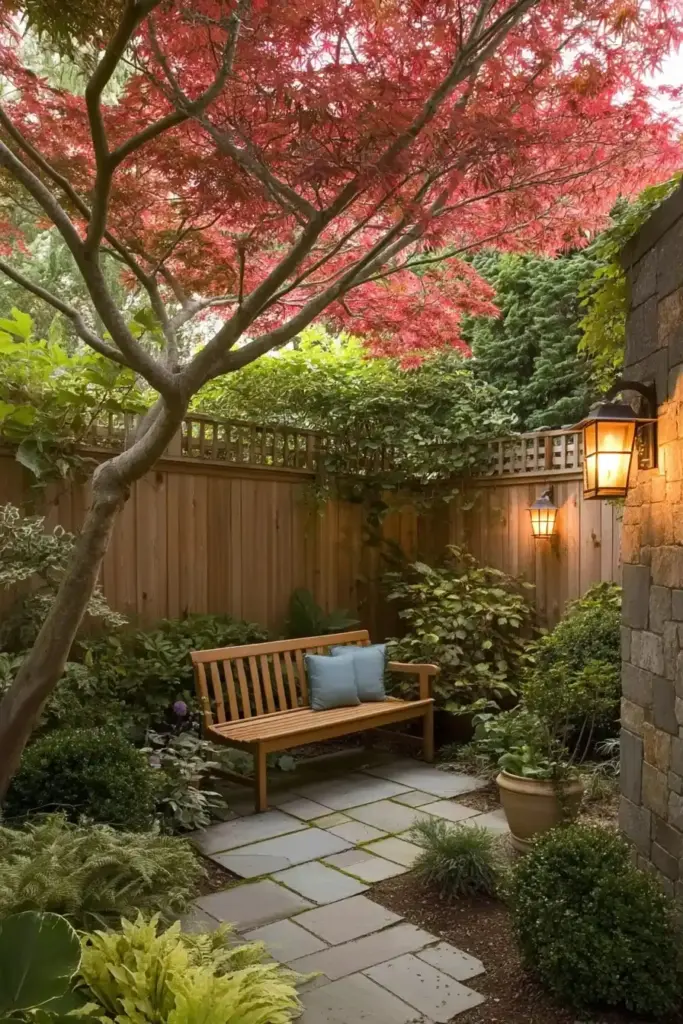
There’s something magical about tucking away a private corner just for yourself in a Japanese maple garden. With their delicate branches and layered canopies, Japanese maples naturally create enclosure without feeling heavy or closed in — perfect for a garden nook designed for solitude or quiet conversation.
How to Create Your Cozy Hideaway:
- Position maples to form a leafy screen that offers gentle privacy.
- Nestle a chair, hammock, or bench beneath the canopy for reading or unwinding.
- Add soft groundcover plants like moss, ferns, or creeping thyme for a lush floor underfoot.
- Include gentle lighting or lanterns to extend your use into the evening.
This intimate nook becomes your own slice of serenity — a retreat where you can sip tea, read a novel, or simply listen to the wind rustle through maple leaves. It’s one of the most personal and rewarding elements you can add to a Japanese design garden.
🏯 8. Blend Traditional with Modern
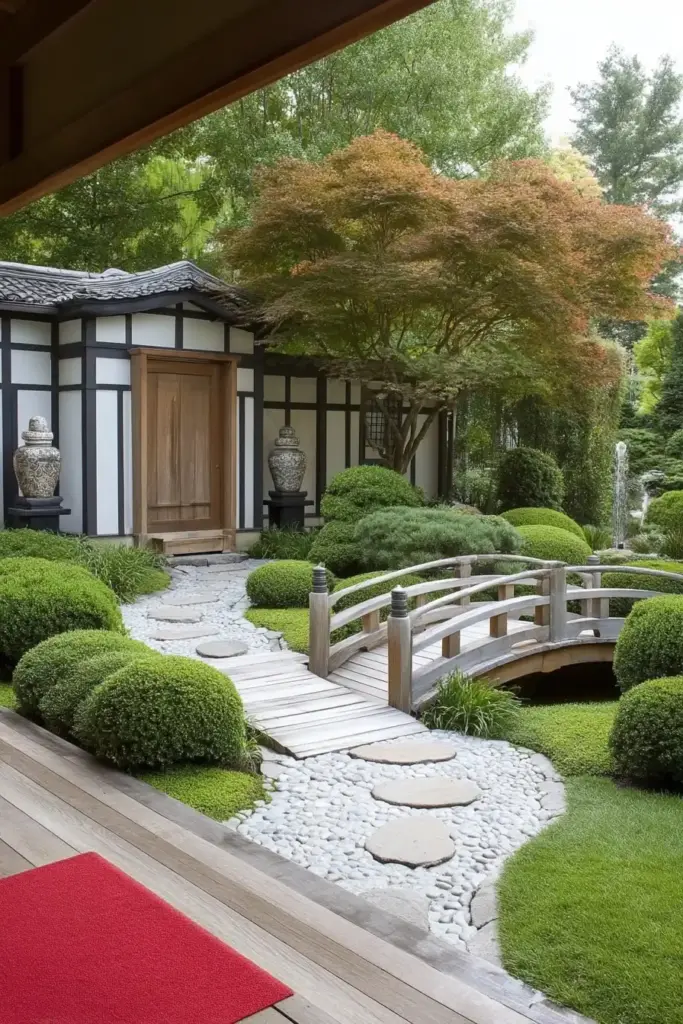
One of the most versatile aspects of a Japanese maple garden is its ability to bridge the gap between traditional aesthetics and contemporary design. Whether your landscape leans toward ancient Zen or sleek minimalism, Japanese maples adapt beautifully—serving as a timeless connector between old and new.
Design Tips for Harmonizing Styles:
- Pair maples with clean lines and neutral materials like concrete, black gravel, or steel planters for a modern touch.
- Add traditional accents such as a stone lantern or bamboo fence to introduce classic charm.
- Use minimalist furniture and uncluttered layout to create open space and visual calm.
- Select maples with bold structure, like ‘Seiryu’ or ‘Acer palmatum dissectum’, that complement both design languages.
This thoughtful fusion elevates your outdoor space into something truly unique—a garden that feels both rooted in tradition and responsive to modern tastes. It reflects the adaptability and elegance of Japanese maples at their finest.
🎐 9. Accentuate with Garden Ornaments
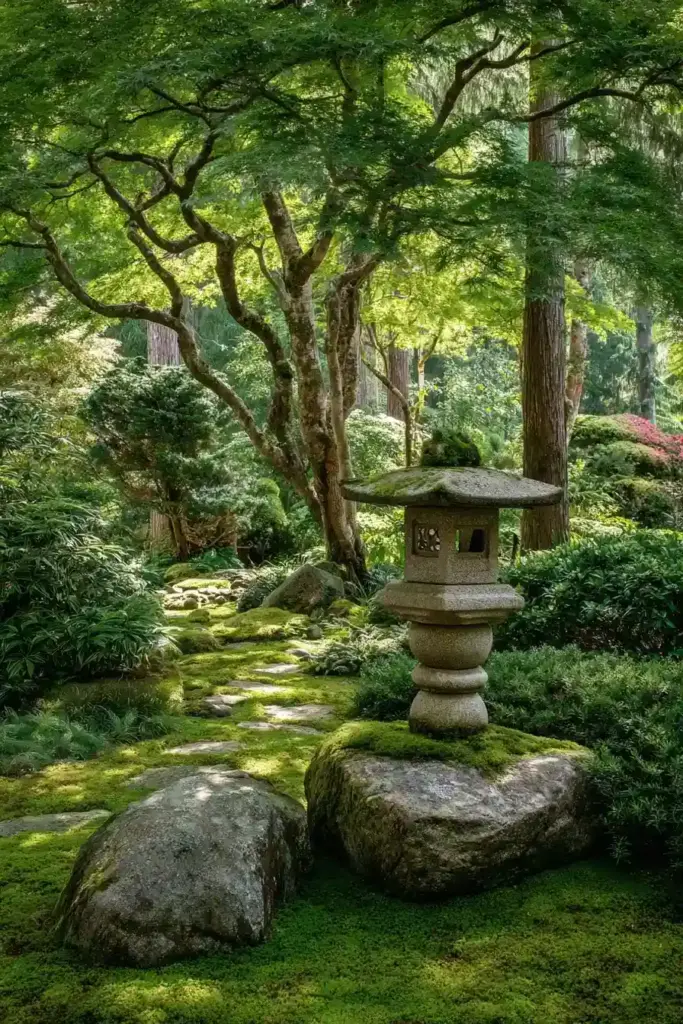
In Japanese landscaping, ornamentation is never random—it’s symbolic, intentional, and always in harmony with nature. Adding carefully chosen garden ornaments to your Japanese maple garden can elevate its atmosphere, infusing it with cultural depth and visual storytelling.
Ways to Complement Maples with Ornaments:
- Place a stone lantern near a maple to guide the eye and softly illuminate its trunk and leaves.
- Use pagoda sculptures or bamboo fountains to reinforce traditional Japanese themes.
- Tuck a Buddha statue or Zen feature into a quiet corner for peaceful reflection.
- Select weathered materials like aged stone, oxidized bronze, or hand-carved wood to blend naturally with your garden’s textures.
Position these elements mindfully—less is more. Ornaments should support the grace of your maples, not overpower them. Done well, these additions infuse your garden with elegance, symbolism, and a whisper of ancient tradition rooted in Japanese design garden ideas.
🚪 10. Elevate Your Entryway
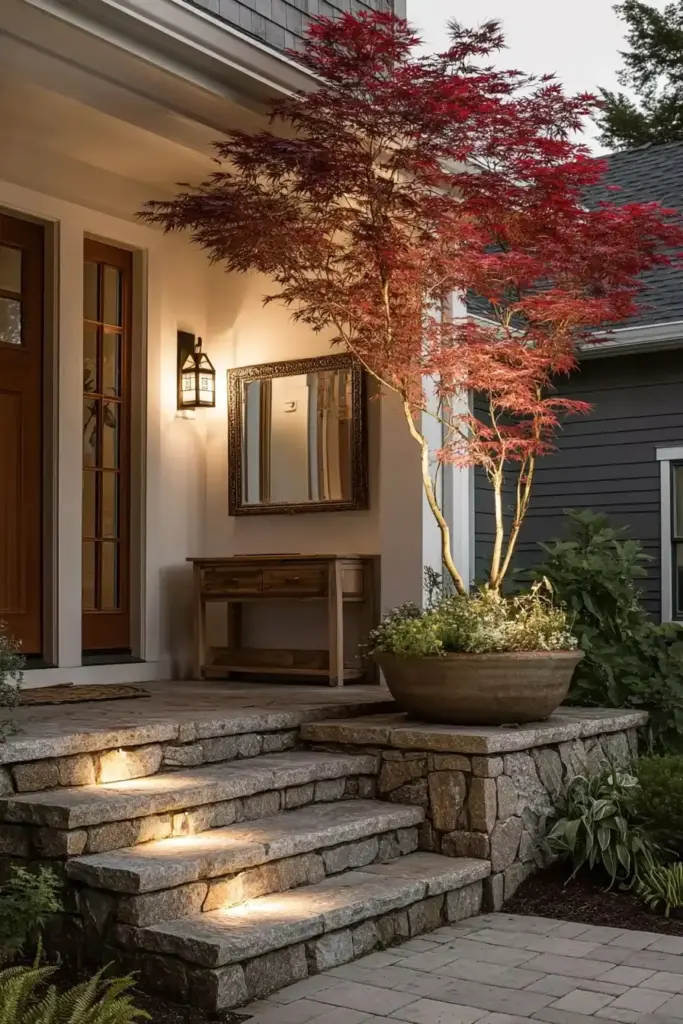
First impressions matter—and few plants create a more welcoming and memorable entrance than a Japanese maple. Adding one to your front garden or entry path instantly enhances curb appeal and sets a serene tone. A thoughtfully placed Japanese maple garden at your home’s entrance combines elegance and warmth with seasonal drama.
Entryway Enhancement Ideas:
- Flank the front door or gate with symmetrical maples in containers or raised beds.
- Use cascading or upright varieties depending on the vertical space and visual emphasis you want.
- Frame walkways with low-growing maples to guide guests gently toward your door.
- Incorporate soft lighting to highlight the foliage and structure in the evenings.
This approach turns a functional area into a beautiful introduction to your home, capturing attention with every season. It’s a small but powerful way to bring Japanese design garden principles—balance, form, and intention—right to your doorstep.
🎨 11. Embrace the Beauty of Contrasts
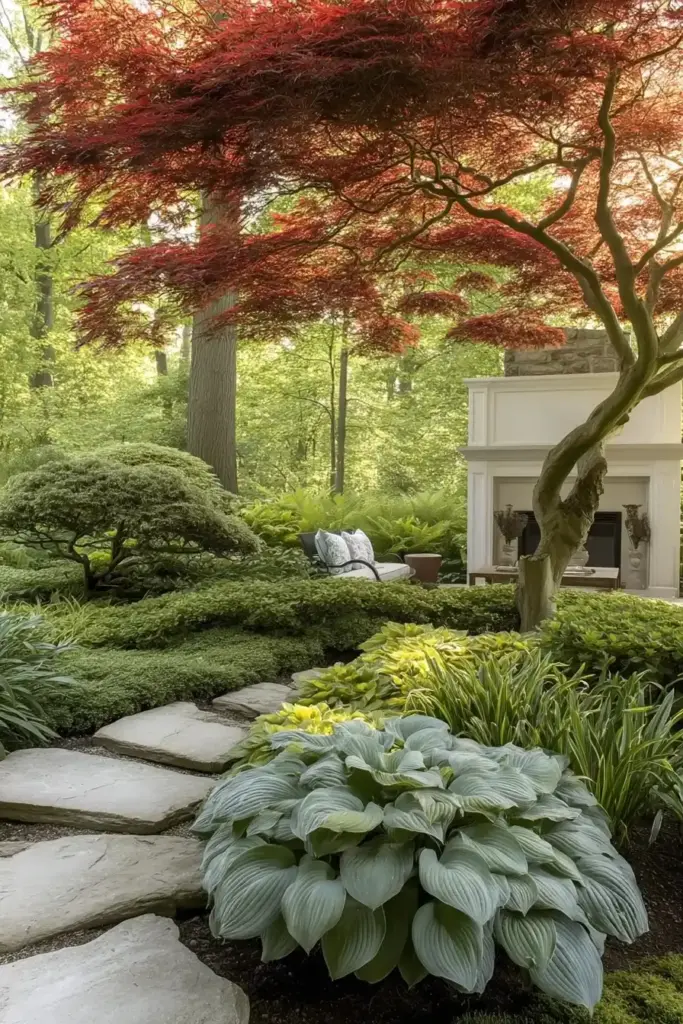
In a well-designed Japanese maple garden, contrast is a quiet form of drama. By pairing the bold, often deeply colored leaves of Japanese maples with soft, textured plants, you create balance and visual intrigue that evolves throughout the seasons.
Smart Contrast Pairings:
- Combine red-leaved varieties like ‘Fireglow’ with soft-green ferns or silver-toned hostas.
- Mix fine maple foliage with broader leaves like bergenia, ligularia, or hydrangea.
- Use moss or creeping thyme as a lush, low-growing contrast beneath maples.
- Plant in shaded areas where textures stand out and subtle color shifts become more noticeable.
This technique mimics traditional Japanese aesthetics, where yin-yang principles influence everything from design to layout. Contrast doesn’t compete—it complements. It’s about finding visual equilibrium, a hallmark of timeless Japanese design garden ideas.
📏 12. Embrace Vertical Gardening
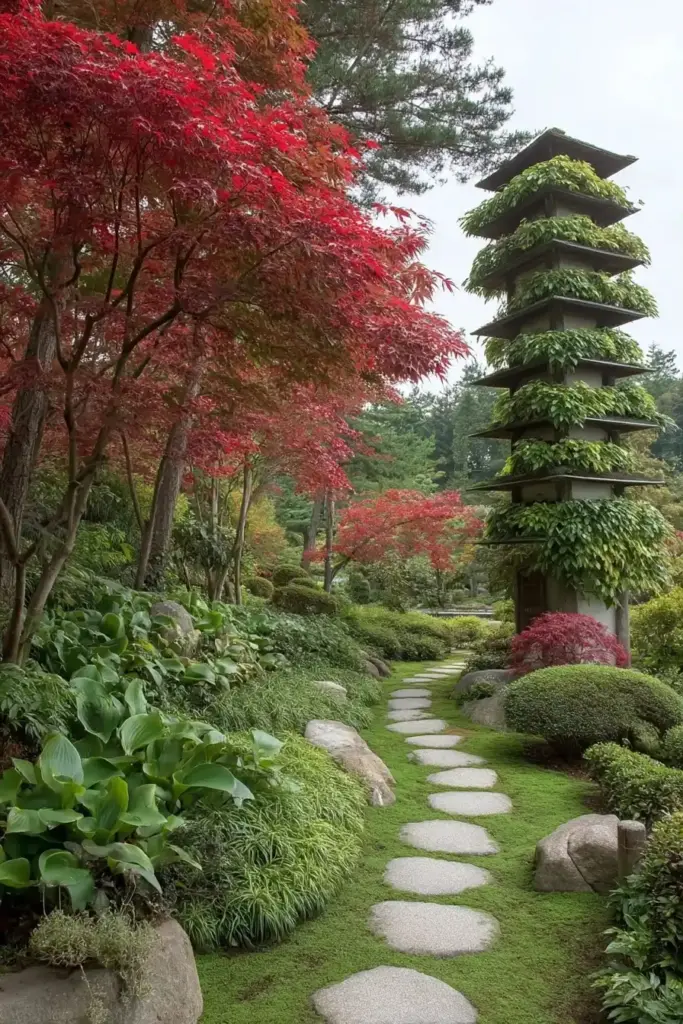
A well-planned Japanese maple garden doesn’t just spread outward — it reaches upward. Japanese maples naturally lend themselves to vertical gardening thanks to their elegant branching and varied heights. By using vertical space intentionally, you create a sense of dimension and spaciousness, even in compact areas.
Vertical Gardening Techniques:
- Choose taller maple varieties like ‘Bloodgood’ or ‘Autumn Blaze’ to draw the eye skyward.
- Layer with trellises or climbing plants behind your maples for a soft backdrop.
- Incorporate vertical garden walls or narrow planters to add green layers without taking up much ground space.
- Use tall sculptures or lanterns to echo the height of your trees and maintain design cohesion.
This vertical approach enhances airflow, creates visual layering, and makes your garden feel more immersive. It’s a clever strategy drawn from Japanese design garden ideas, where elevation is used to guide movement and meditation through space.
🌙 13. Light Up the Night
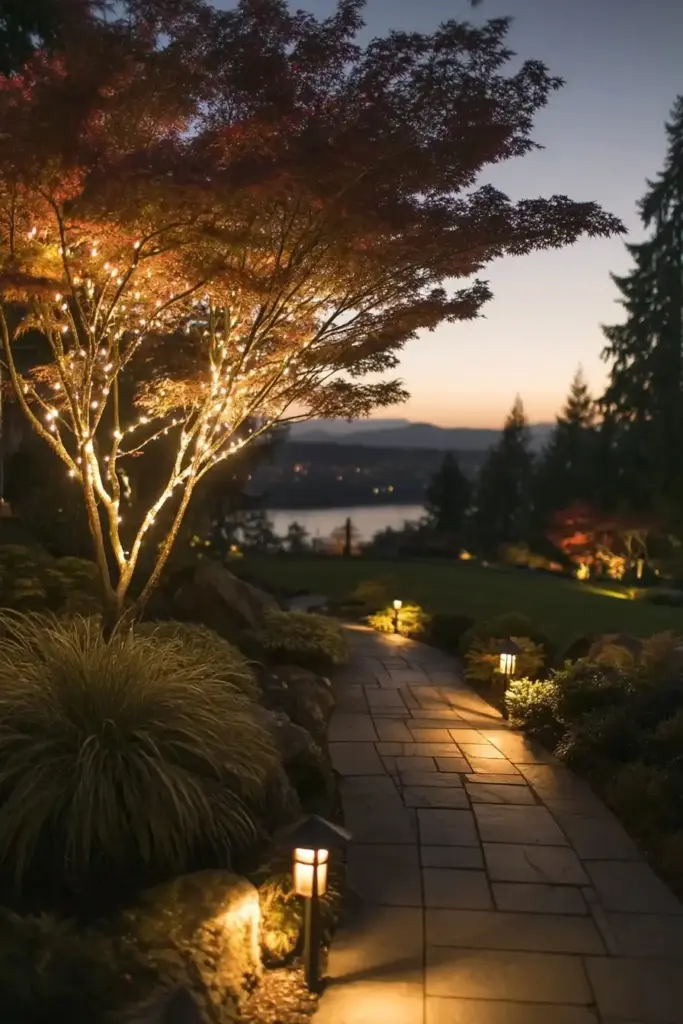
A Japanese maple garden doesn’t lose its magic after sunset — in fact, with thoughtful lighting, it can become even more enchanting. Japanese maples have a sculptural quality that comes alive in low light, casting intricate shadows and revealing textures you may not notice by day.
How to Illuminate with Purpose:
- Use ground-level LED spotlights to up-light the canopy and highlight the tree’s branching.
- Wrap soft fairy lights or lanterns around surrounding elements to create ambiance.
- Install solar pathway lights to guide the way and enhance safety without disrupting the mood.
- Highlight water features or stone ornaments to extend the nighttime visual experience.
Lighting in a Japanese garden should be subtle and intentional — never harsh or overwhelming. The goal is to create a moonlit glow that supports reflection and serenity, staying true to Japanese design garden ideas rooted in tranquility and balance.
🎨 14. Design a Colorful Border
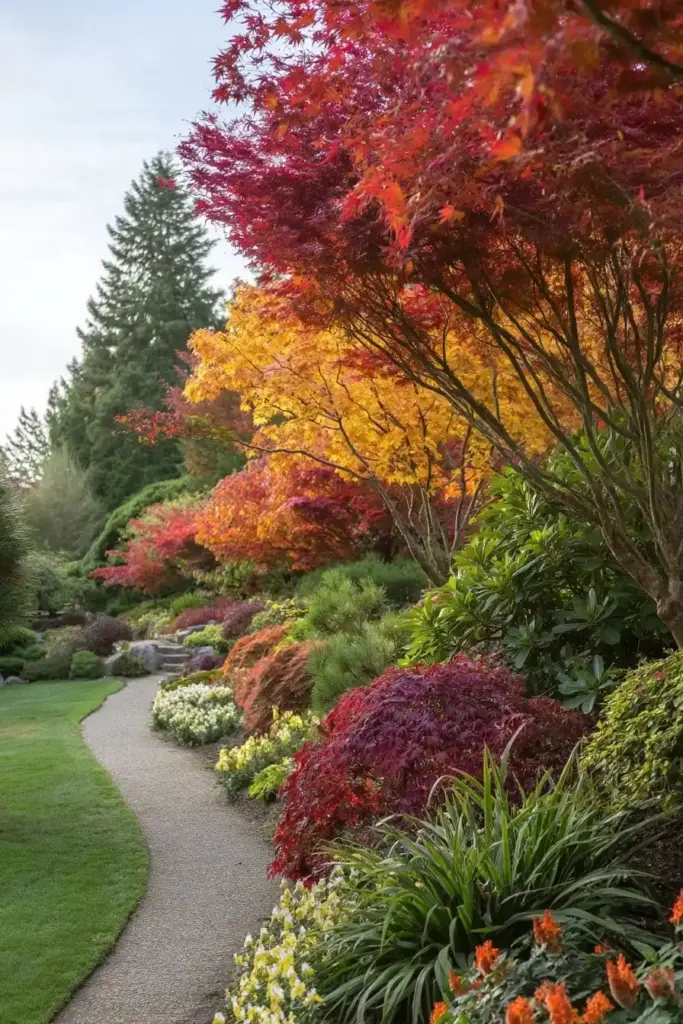
A colorful border filled with Japanese maples can transform the edges of your garden into a living frame—vivid, ever-changing, and effortlessly elegant. In a Japanese maple garden, borders aren’t just boundaries—they’re visual invitations that guide the eye around the space and soften transitions between areas.
Tips for a Striking Maple Border:
- Alternate between upright and cascading maple forms to add movement and rhythm.
- Choose varieties with staggered seasonal interest — reds, purples, golds, and greens to ensure year-round appeal.
- Layer with companion plants like azaleas, hostas, or ornamental grasses for texture and color balance.
- Use stone edging or moss paths to separate the border from the lawn or walkway while staying in harmony with natural themes.
By planting Japanese maples along property lines, pathways, or garden beds, you create a bold yet serene boundary. It’s a practical way to blend form and function, staying rooted in Japanese design garden ideas that honor both aesthetics and structure.
🏛 15. Integrate with Architecture
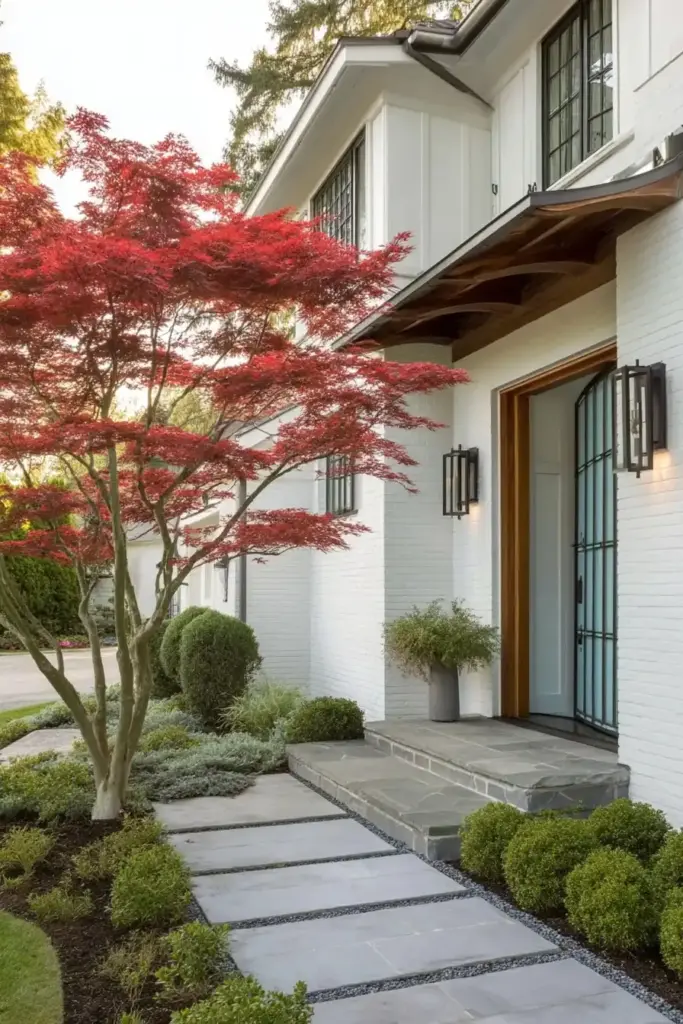
One of the most refined ways to enhance your outdoor space is by blending natural beauty with built structures. Japanese maples, with their sculptural form and graceful canopy, are perfect for softening architectural lines and adding elegance to patios, porches, and pergolas. In a well-composed Japanese maple garden, architecture and nature coexist harmoniously.
How to Blend Maples with Your Home’s Design:
- Plant near structural features like pillars, entryways, or fences to create natural flow.
- Frame porches or decks with upright maple varieties for a welcoming, shaded environment.
- Use large containers on balconies or patios to bring foliage closer to eye level.
- Choose foliage colors that contrast gently with your home’s exterior for visual impact.
This approach enhances curb appeal and extends your living space outdoors. It also honors a core principle of Japanese design garden ideas—the seamless integration of human-made and natural elements.
🪴 16. Experiment with Container Gardening
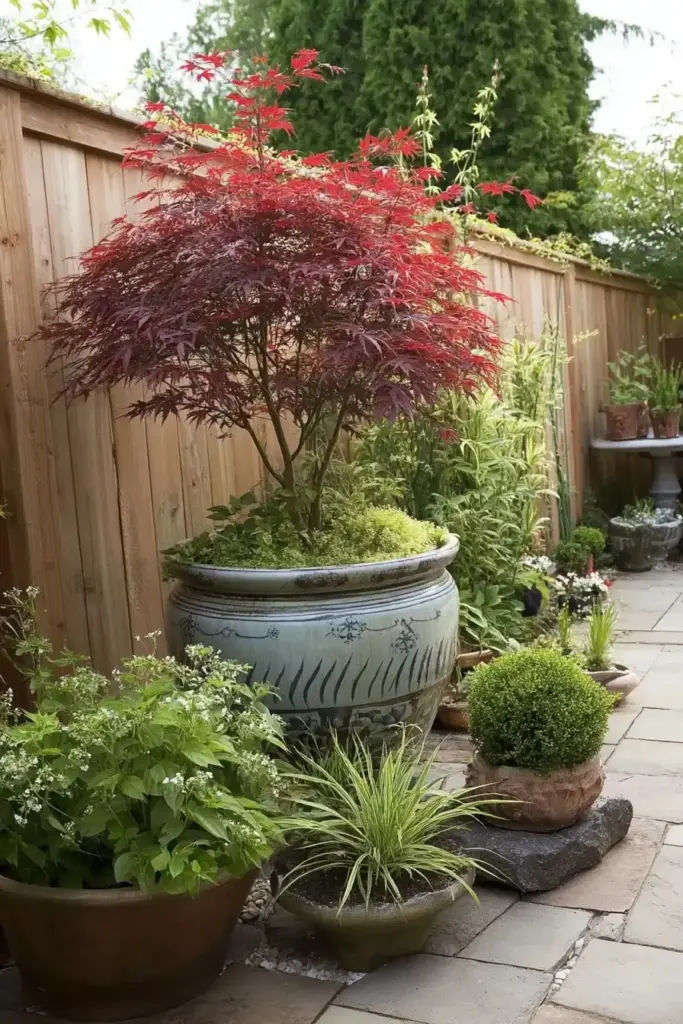
Limited on space? Container gardening is a perfect solution for showcasing Japanese maples in patios, balconies, or small urban gardens. Many varieties of maples thrive in pots, making them a versatile choice for a compact yet refined Japanese maple garden design.
Tips for Successful Container Growing:
- Select dwarf or slow-growing varieties like ‘Shaina’, ‘Tamukeyama’, or ‘Mikawa Yatsubusa’.
- Use wide, shallow containers with excellent drainage to mimic natural growing conditions.
- Choose neutral or earthy pots to maintain a minimalist, Zen-inspired aesthetic.
- Rotate containers seasonally or reposition to create new focal points.
Container gardening adds flexibility and structure to your layout, allowing you to experiment with placement, height, and color composition. It’s an ideal technique rooted in Japanese design garden ideas where every element—even in small spaces—contributes to the overall harmony.
🌿 17. Create a Dynamic Duo
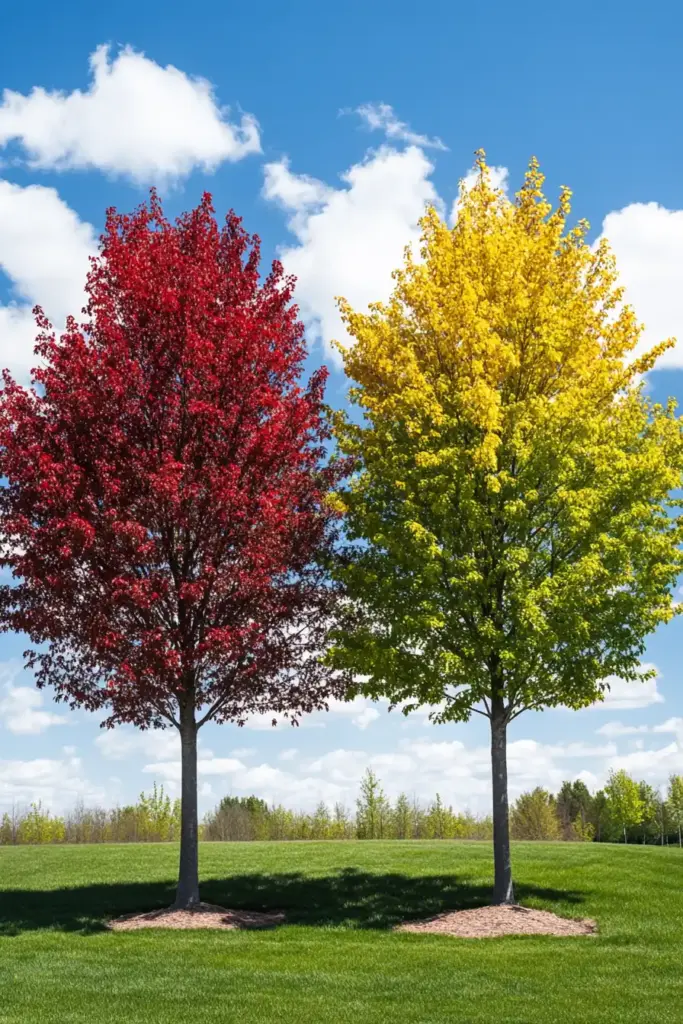
Pairing two contrasting Japanese maples side by side is a simple yet stunning way to amplify visual interest in your Japanese maple garden. The right combination of color, shape, and size can turn a quiet corner into a captivating display of seasonal artistry.
How to Pair Maples for Maximum Effect:
- Contrast leaf shapes — pair a deeply dissected variety like ‘Red Dragon’ with a broader-leafed ‘Bloodgood’.
- Play with color — combine a crimson maple with a golden or lime green variety for dramatic flair.
- Use one upright and one weeping form to create visual movement and rhythm.
- Anchor the pairing with a neutral backdrop like stone, gravel, or a white wall to let the foliage shine.
This duo approach not only enhances the beauty of each tree but also reinforces the principles of duality and balance found in traditional Japanese design garden ideas. It’s a dynamic way to tell a visual story with just two trees.
🌱 18. Experiment with Bonsai Techniques
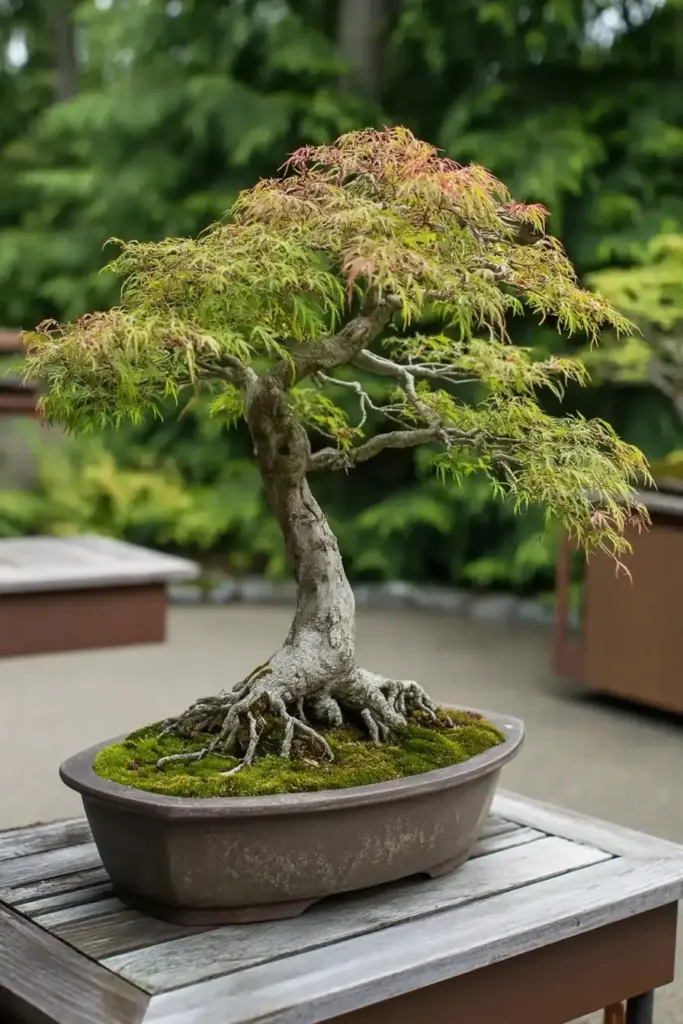
If you’re drawn to the artistry of miniature landscapes, incorporating bonsai into your Japanese maple garden can be a deeply satisfying endeavor. Japanese maples are among the most beloved species for bonsai, offering fine branching, vivid seasonal color, and graceful form in compact proportions.
Starting Your Bonsai Journey:
- Choose small-leaf varieties like ‘Kiyohime’ or ‘Deshojo’ for better scale and proportion.
- Begin with a starter tree or bonsai kit to learn shaping, wiring, and pruning techniques.
- Place bonsai on stone pedestals, benches, or wooden trays to elevate and highlight their structure.
- Maintain regular care — bonsai requires attentive watering, pruning, and feeding to thrive.
Integrating bonsai into your garden introduces a living sculpture — one that evolves over time with your own touch. It brings craftsmanship, contemplation, and intimacy to the broader Japanese design garden philosophy, where every element tells a quiet, intentional story.
🌸 Conclusion
A Japanese maple garden is more than a collection of beautiful trees—it’s an invitation to create harmony, express artistry, and cultivate peace in your outdoor space. Whether you’re layering trees for depth, carving out a serene meditation nook, or blending traditional and modern aesthetics, each design idea shared here centers on intention and natural elegance. From compact courtyards to expansive landscapes, Japanese maples offer endless possibilities to elevate your garden with color, movement, and soul. Let these ideas inspire your journey toward a space that feels as tranquil as it looks—rooted in nature, shaped by design, and alive with seasonal beauty.
🌿 Love gardening inspiration? Follow me on Pinterest for bold plant ideas, tips, and seasonal color!
More Posts


